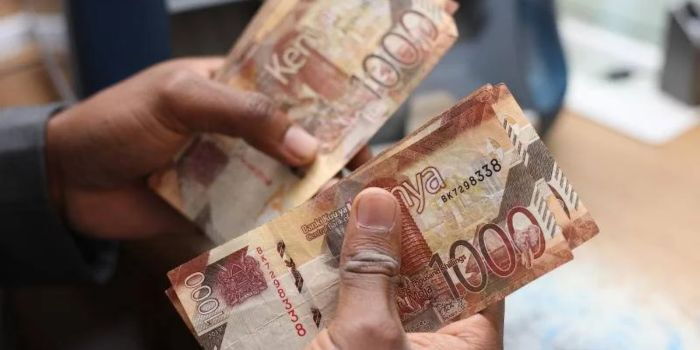The country’s debt-to-GDP ratio has dropped 5.2 per cent over the last two years on account of the strengthening of the Kenyan shilling against the dollar.
According to the National Treasury, the debt-to-GDP ratio now stood at 65.5 per cent in 2024 and will drop to 63.6 per cent this year.
Expressed as a percentage, the debt-to-GDP ratio indicates the proportion of a nation’s debt relative to its economic output. A higher debt-to-GDP ratio suggests that a country might face challenges in meeting its debt obligations without incurring additional debt.
Conversely, a lower ratio implies a more manageable debt level relative to the country’s economic size. This ratio is crucial for assessing a nation’s financial health and its ability to repay debt. Governments often use it to make informed fiscal policy decisions.
President William Ruto chairing the Committee of the African Heads of State and Government on Climate Change at the African Union Headquarters, Addis Ababa, Ethiopia on Sunday, February 16, 2025.
PCS
Treasury estimates that the rate will continue dropping to reach 52.9 per cent in 2029.
In its 2025 Budget Statement Policy submitted to the National Assembly last week, the government said the drop in the debt-to-GDP ratio can be attributed to the rallying of the shilling.
The Kenyan shilling has been steady at Ksh129 for nearly eight months now, which has resulted in Kenya’s gross public debt falling for the first time in at least two decades. In essence, since the shilling has strengthened from Ksh160, Kenya is paying less for the same debt obligations.
“The exchange rate appreciated from an average of Ksh160.8 in January 2024 to Ksh129.4 in December 2024, an appreciation of 19 per cent,” Treasury said.
Adding, “The recovery has restored confidence in financial markets and significantly reduced the cost of servicing external debt, creating vital fiscal space for development imperatives.”
Think of it this way, if you owe, say, USD 300 and you are paying it back using the Kenyan shilling. When the shilling is strong to the dollar, say Ksh29, you are paying less for the loan compared to when the shilling is weak, that is, when the shilling is, say, at Ksh160.
The country’s total liabilities dropped 2 per cent to Ksh10.93 trillion as of December from a year earlier.
Despite this, the allocation on public debt servicing in the upcoming financial year has been increased by Ksh265.8 billion. This coincides with the maturing debt obligations between 2025 and 2028.
To reduce the reliance on debt, President William Ruto’s government has pledged to boost tax revenue while reducing government spending and borrowing.
“To boost revenues, emphasis will be placed on a combination of tax administrative and tax policy reforms that include: strengthening tax administration for enhanced compliance through expansion of the tax base, minimising tax expenditures, leveraging on technology to revolutionise tax processes, sealing revenue loopholes and enhancing the efficiency of the tax system; and, focusing on non-tax revenues that ministries, departments, and Agencies can raise through the services they offer to the public,” Treasury said.
Treasury Cabinet John Mbadi during a past media engagement at Treasury Buildings in Nairobi.
Treasury


